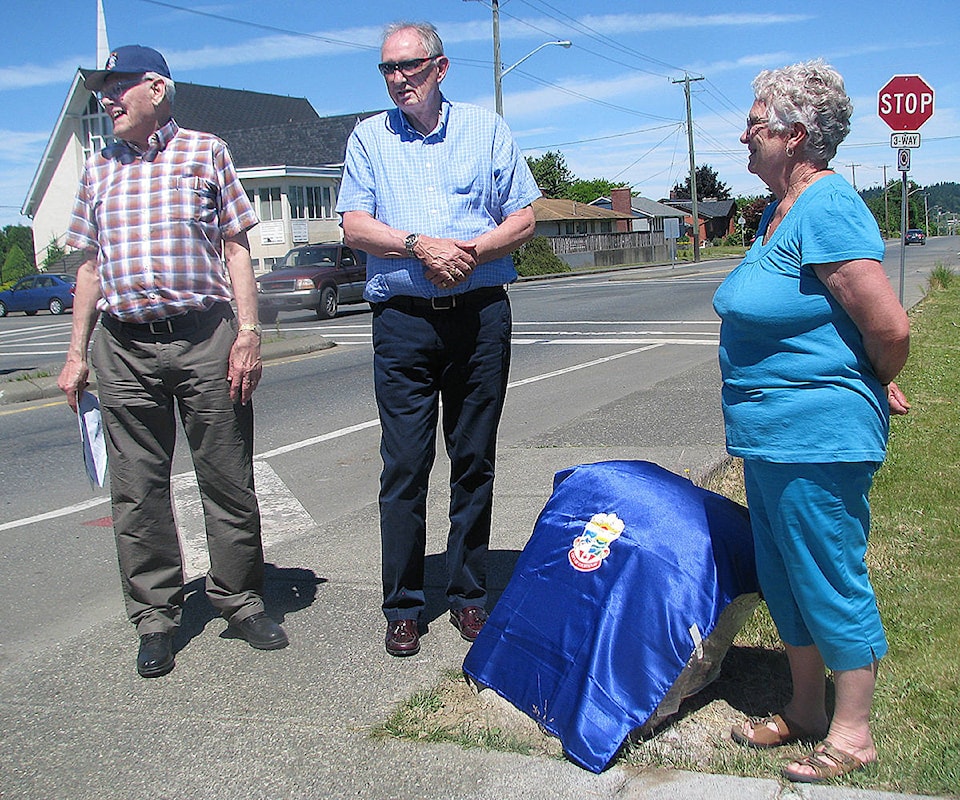An “old time neighbourhood” was recognized Saturday afternoon with a special heritage plaque.
The “40 Houses” were built to accommodate veterans of World War II.
They were built on the old “Cudmore property” bounded by the railway tracks, 17th Street, McPhee Avenue and 18th Street.
The heritage plaque was installed on a rock at the corner of 17th and McPhee.
The inscription reads: “Commemorating a Courtenay Heritage Neighbourhood, The 40 Houses, Built between September 1948-September 1949. Purpose built Veteran Housing funded by the Federal Government. City of Courtenay 2017.”
The first 10 houses were allotted to: A.J. “Spike” Sullivan, H.A. “Henry” Matt, Dave S. Garman, Lorne “Slim” Pollock, Jack “Tex” Rawlins, Edwin Erickson, J.J. Harper, Robert Louden, J. Scholefield and D.H. Ashby.
Members of some of these original families attended Saturday’s ceremony and two took part in the plaque unveiling:
Lorne Pollock, of Victoria, a son of one of the original residents, and Margaret Seaby, of Pinefat Lake, B.C. (a daughter in the Rawlins family).
Lawrence Burns, Courtenay Heritage Advisory Commission chair, said the neighbourhood was “a real good place to bring up your family”.
The houses were tiny by today’s standards – there were three plans of 713, 820 or 891 sq. ft.
Rentals were determined at $30, $33.60 and $37.80 per month. Monthly rentals could not exceed 60 cents per $100 construction value.
According to local historian Judy Hagen’s Hunt for History column, the 10-acre “Cudmore land” was donated by the City of Courtenay to the federal government in 1948.
Dalton Cudmore, born in Ontario, arrived in the Comox Valley about 1911 and was listed as a logger in the census.
He served in the 238th Battalion which became known as the Forestry Corps during World War I. He ran unsuccessfully twice for Courtenay council.
Cudmore left the Valley during the Great Depression to take up farming near Salmon Arm, where he died in 1943.
Ivon Aven was awarded the contract in 1948 to build 40 houses in the veterans’ development – estimated to be valued at a quarter of a million dollars.
Aven died tragically, according to Burns, in a car accident on the old highway by the tourist bureau.
After the plaque unveiling ceremony, those attending went for refreshments at the nearby Faith Lutheran Church. Former residents were recalling favourite memories of the neighbourhood as they walked over to the church.
